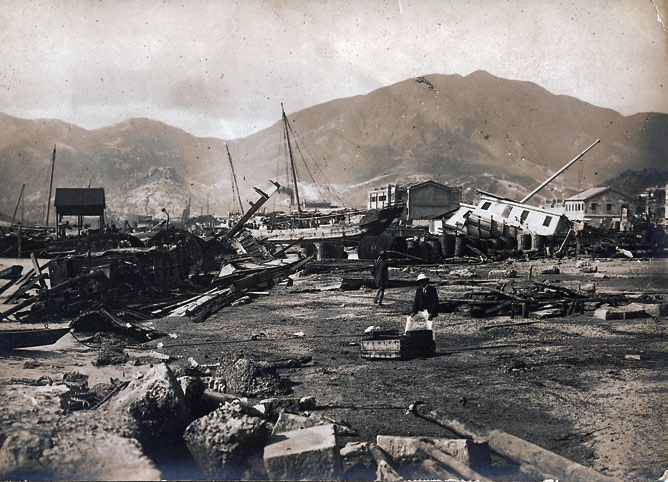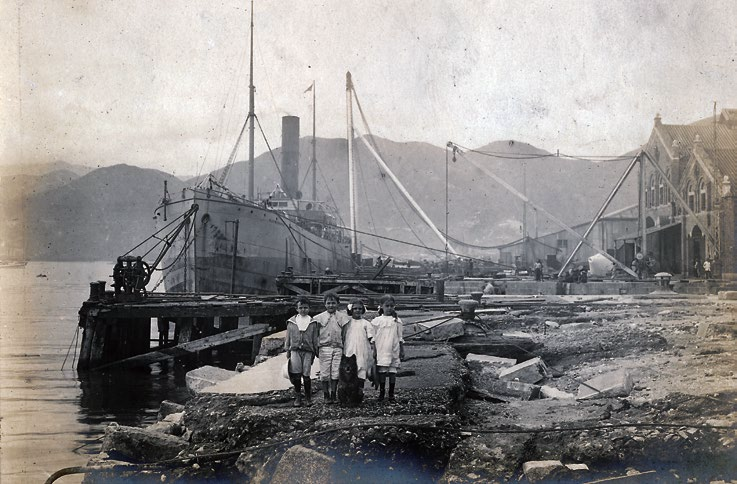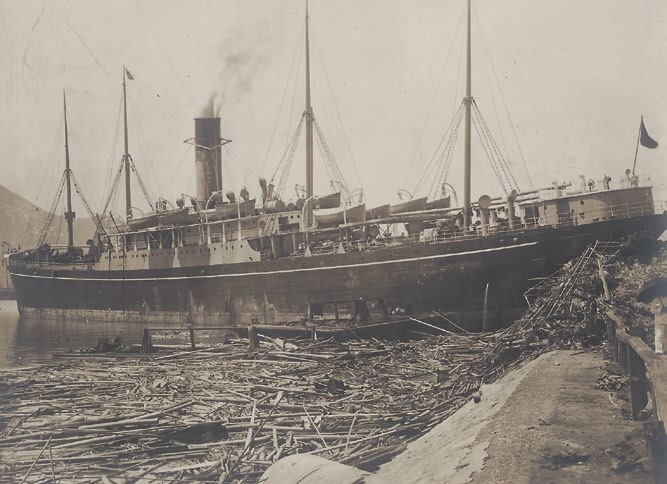Alongside the pleasures of boating in asia is a growing need to be aware of unstable conditions, with the long-range forecast for the region calling for increasingly stronger disturbances.


ALONGSIDE THE PLEASURES OF BOATING IN ASIA IS A GROWING NEED TO BE AWARE OF UNSTABLE CONDITIONS, WITH THE LONG-RANGE FORECAST FOR THE REGION CALLING FOR INCREASINGLY STRONGER DISTURBANCES.
TYPHOONS AROUND SOUTHEAST ASIA and China are predicted to grow more powerful in the years to come, according to a recent study published in the journal Nature Geoscience. The warning of stronger storms in future comes on the heels of data compiled by University of North Carolina scientists, who have noted that the destructive power of typhoons across large swaths of Asia has increased by some 50% over the last 40 years due to warming coastal seas that fortify nascent storms, encouraging higher wind speeds.









“It is a very, very substantial increase,” says research leader Professor Wei Mei of the University of North Carolina at Chapel Hill, as quoted in The Guardian newspaper on September 5. “We believe the results are very important for East Asian countries because of the huge populations in these areas.”
Typhoons are one of nature’s most fierce examples of raw power. Like the destructive maritime storms that occur in other parts of the world – known as hurricanes in the Atlantic and Northeast Pacific, and cyclones in the South Pacific and Indian oceans – typhoons can reach sustained wind speeds of around 64 to 84 knots, or between 118 and 156 kilometres per hour.
The Hong Kong Observatory has a classification of “super typhoons” that reach sustained winds of more than 185 km/h. It is the sustained wind speeds that form the measurement of a storm’s intensity, and researchers reckon that a 15% rise in intensity leads to a 50% rise in destructive power.
The ingredients for typhoons, according to the National Ocean Service (NAO) in the United States, include “a pre-existing weather disturbance, warm tropical oceans, moisture, and relatively light winds. If the right conditions persist long enough, they can combine to produce the violent winds, incredible waves, torrential rains, and floods we associate with this phenomenon,” the NAO’s website reads.
Regardless of their name, typhoons have left a trail of death and devastation across Asia, mostly ashore when populated areas are hit. The 1970 Bhola Cyclone was not ranked in the highest of storm categories (it made impact at a category 3 level) but has been recognised as one of the most – if not the most – deadly tropical cyclone in recorded history, with up to 500,000 deaths in the lowlands of what was then East Pakistan.
Other infamous typhoons and cyclones include Typhoon Nina in August 1975, which killed an estimated 100,000 people in China. Hong Kong’s worst natural disaster was caused by a typhoon in 1906 when 10,000 died, 47 ships sank and 1,000 junks were left damaged. More recently, Japan’s government said it would designate four typhoons – Chanthu, Mindulle, Lionrock and Kompasu – that hit the country in August as extremely severe disasters.
For sailors, paying close attention to weather forecasts and updates is vitally important. Despite major advancements helped by the advent of better satellite imagery, improving computer models and other innovations, the behaviour of typhoons can be notoriously unpredictable.
“It’s like the Chinese yin and yang,” says one of the region’s top weathermen, Shun Chiming, Director of the Hong Kong Observatory. “Typhoons are always transforming into themselves, and their fine structures may not be captured by computer models.”
Seated in a panelled meeting room at the colonial-era Hong Kong Observatory, Shun displays a slide termed the “Navigable Semicircle” to illustrate the general movement of typhoons that navigators should be aware of. A northwest-moving typhoon will have more powerful, easterly winds on its right side, he says, with the winds circulating in a counterclockwise direction.
“Because the typhoon is moving northwest, the winds on the right side will be stronger, so sailors should go the left side,” he adds.
While most sailors should have this information already at hand, Shun cautions that typhoons bring hazards aside from actually being caught in one. At the outer fringes of typhoons are spiral bands that can cause severe squalls.
“In recent years we have found these bands to be quite strong; such squalls can capsize vessels,” he says, pointing to the June 2015 Yangtze River ferry disaster when winds sunk a ferry causing 442 deaths.
While many factors may contribute to climate changes, all barometers seem to point back to global warming as a cause for oceanrelated consequences that sailors will have to navigate in the years to come. Researchers around the world so far seem in general agreement with the University of North Carolina study.
For the Observatory’s Shun, “the biggest worrying trend is rising sea levels and oceans expanding with global warming.” He points to the summary of a paper published in Nature Geoscience in 2010, with which he concurs: “… it remains uncertain whether past changes in tropical cyclone activity have exceeded the variability expected from natural causes,” the paper reads.
“However, future projections based on theory and highresolution dynamical models consistently indicate that greenhouse warming will cause the globally averaged intensity of tropical cyclones to shift towards stronger storms, with intensity increases of 2–11% by 2100. Existing modelling studies also consistently project decreases in the globally averaged frequency of tropical cyclones, by 6-34%.”
Lifelong sailor David Jamieson also has no doubt whether storms will continue to strengthen, and he agrees that warming oceans are the main cause.
“I think most mariners realize that as the average sea temperatures rise that there is more energy available to feed bigger more powerful cyclones,” says Jamieson, who is also the Founder of Yacht Help (see sidebar). “Earlier this year I went on a diving trip. The dive was to 36 metres and was outside the main reef near where the seabed drops to 2,000 metres. I checked water temperature on my computer, which read 29C.
“This is unheard of in my experience for the ocean to attain this temperature at such a depth outside the reef. Inside the shallow areas (2m-5m) between the beach and the reef, fish were dying by the hundreds due to overheating.” Still, there may be a small silver lining in the intensifying storms of tomorrow. “After Cyclone Winston there was an immediate and noticeable drop in the water temperature,” says Jamieson. “This is the primary function of cyclones; to balance the planet by redistributing heat and I believe, although I am no scientist, that they are a necessary evil.”



































